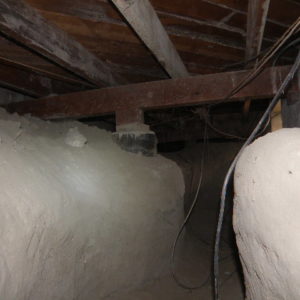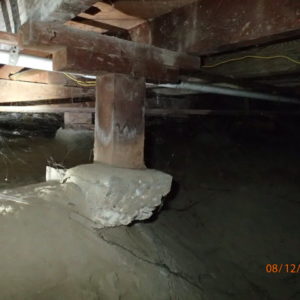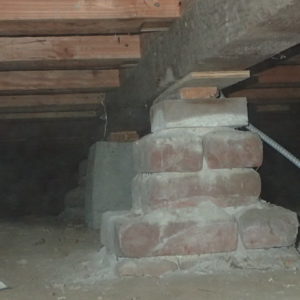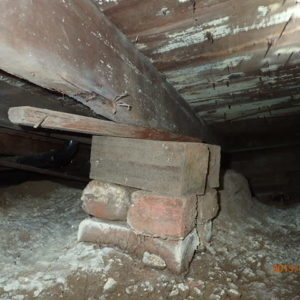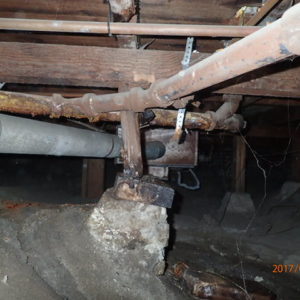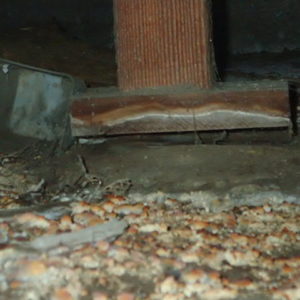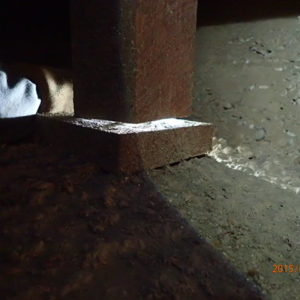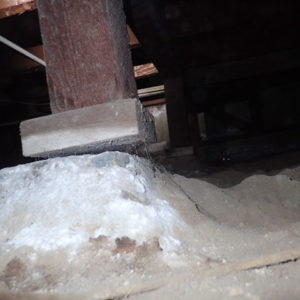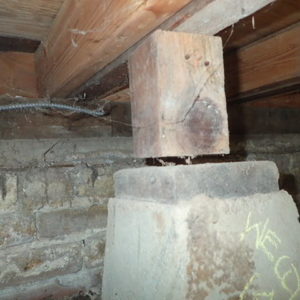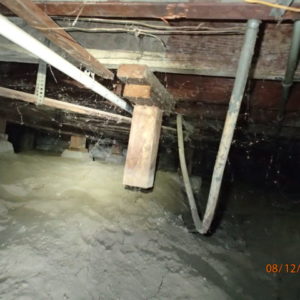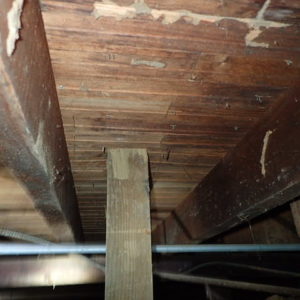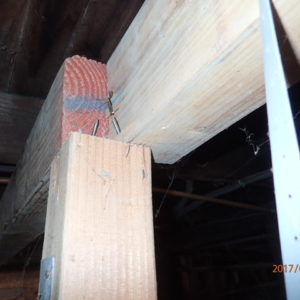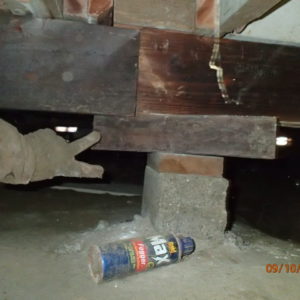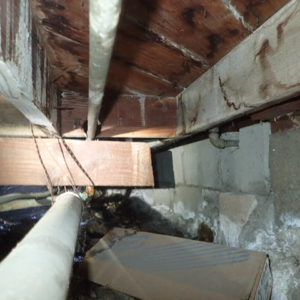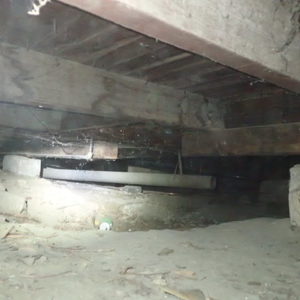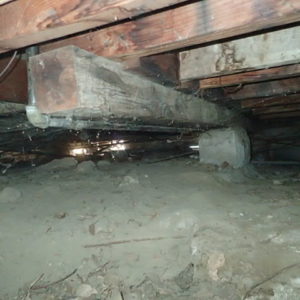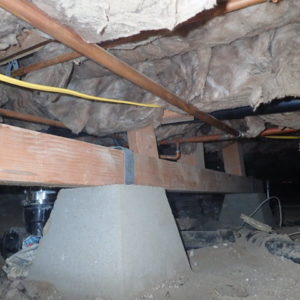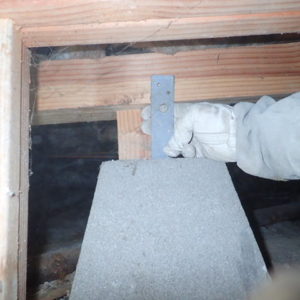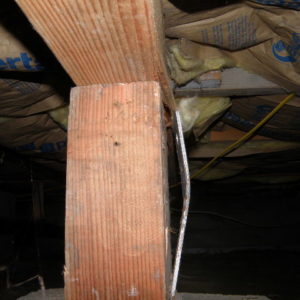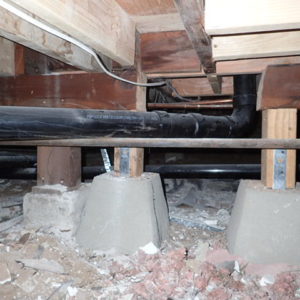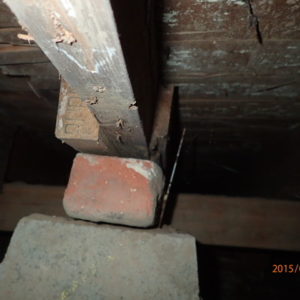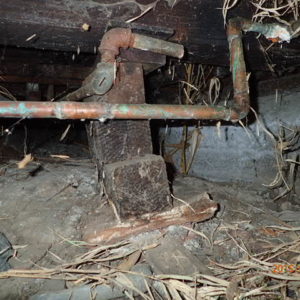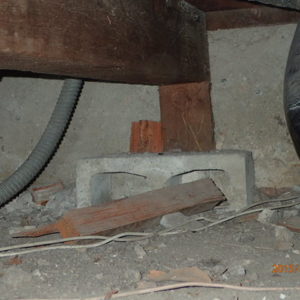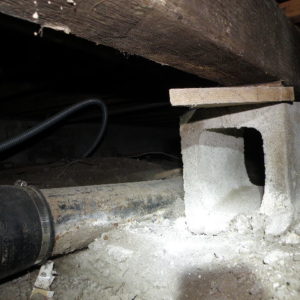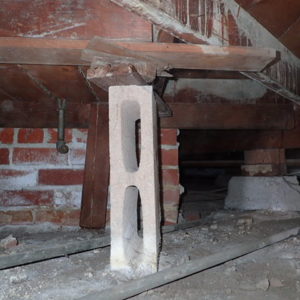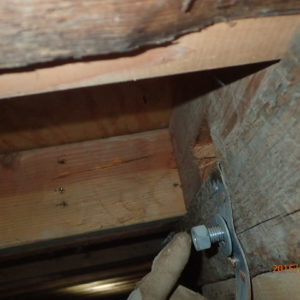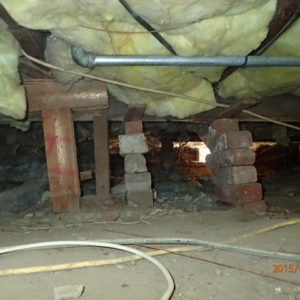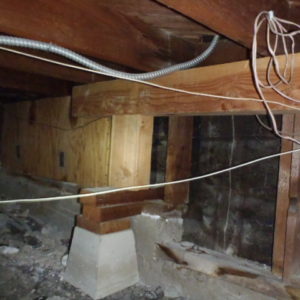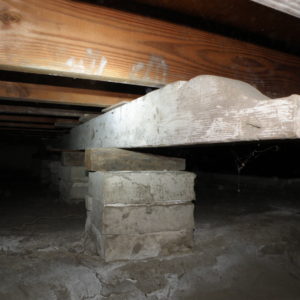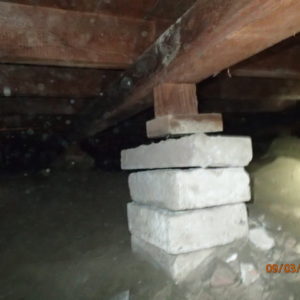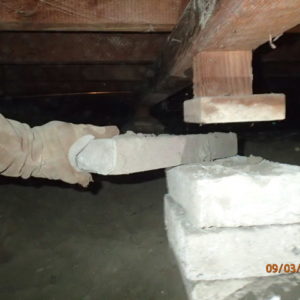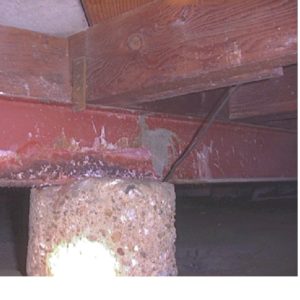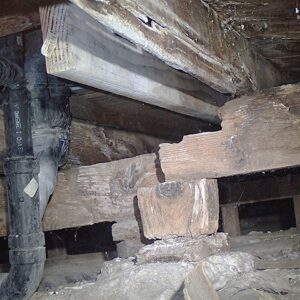Bad Supports in Foundations
Without a doubt, if you think something looks fishy or abnormal, stop and think. If you have never seen something constructed in the way Uncle Wilbur just put it together in your house, you are probably right! Pay attention because this section is purposely showing your many incorrect installations under a house. Some of these people may have actually thought they had done the job well. Others examples may simply be a unscrupulous contractor who ripped off Old Lady Smith and took her money knowing she wouldn’t go under the house to look. The foundation is holding up your house so this warrants getting a little dirty in coveralls just to look in all areas….. at least once or someone you trust to look.
Bad Supports
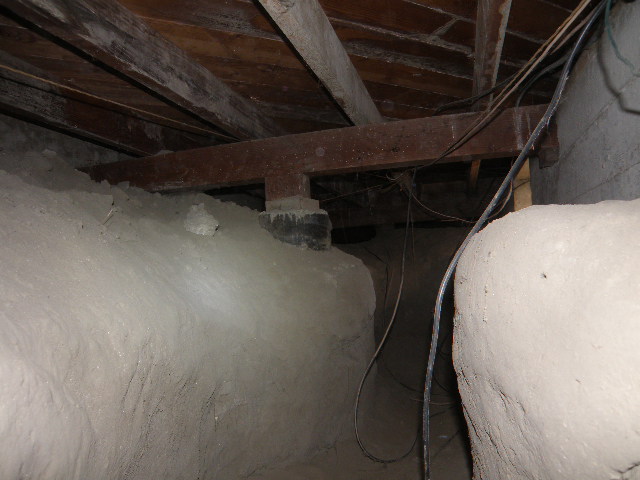
It may sound like fun to make your own basement, but the load transfer of the support post actually goes to midair. This dirt has not yet fallen away but this a dangerous situation.

Any excavation by supports can undermine the stability and allow the floors to sag.
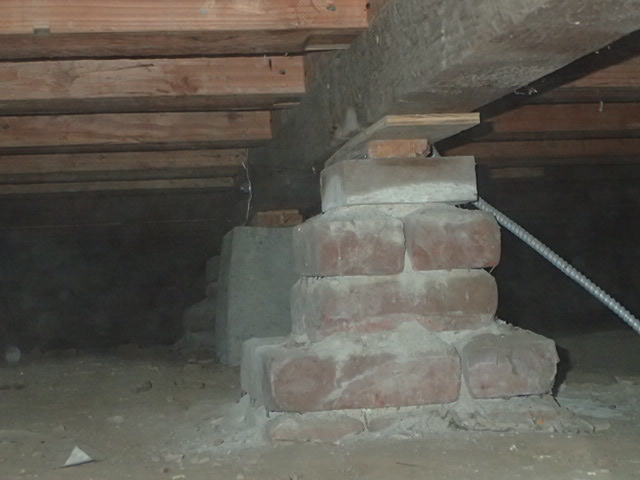
Brick supports and very old houses often had the mortar deteriorate back into sand. This should be replaced.
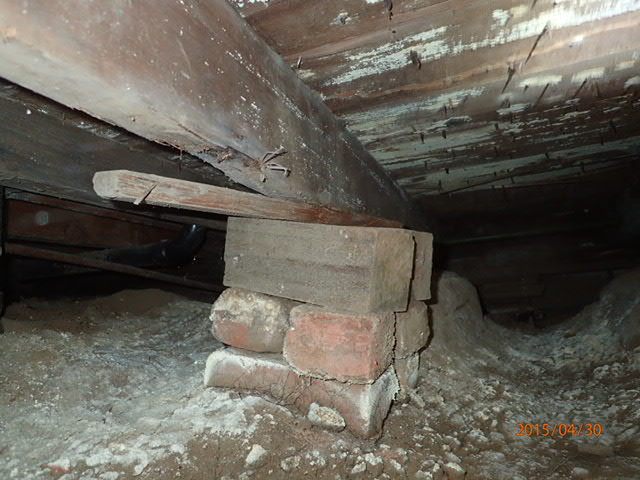
It is highly recommended to replace and upgrade any non-professional support such as these loose pieces of wood and brick.
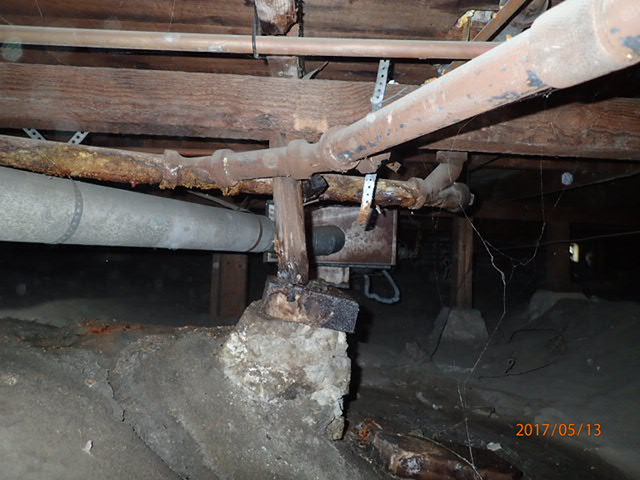
The corroded pipe is leaking and has washed away the loose soil and is now a problem.
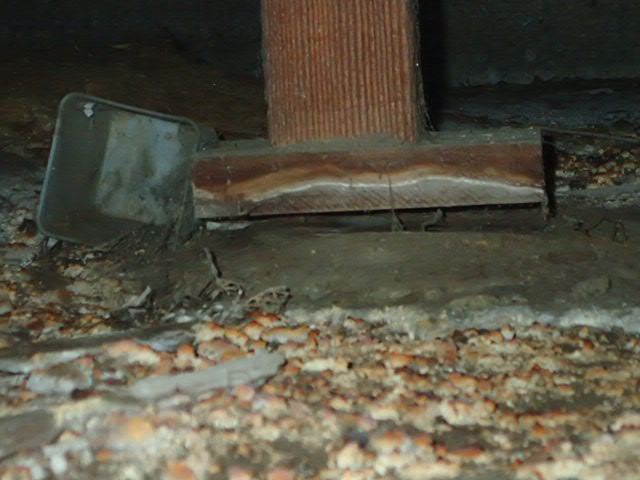
This shows a crawlspace that was flooded and the concrete pad sank into the loose dirt separating itself from the woodblock and post.

Installing a support on loose, powdery soil can allow settling. The inspector is shining a flashlight behind where the support has separated from the woodblock that is loose in the soil. These were never even nailed together.

Another example of a support settling and separating. Some times it separates from the beam and sometimes from the base depending upon how or where it was secured, if at all.
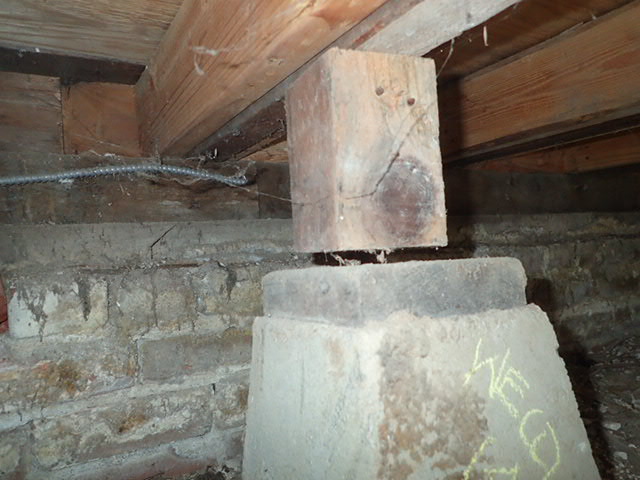
This shows another concrete pad that was set on the loose soil that was not compacted. Notice how the woodblock was never nailed to the pad.

This shows a non-professional support and the soil that was not compacted was moved during a plumbing leak.
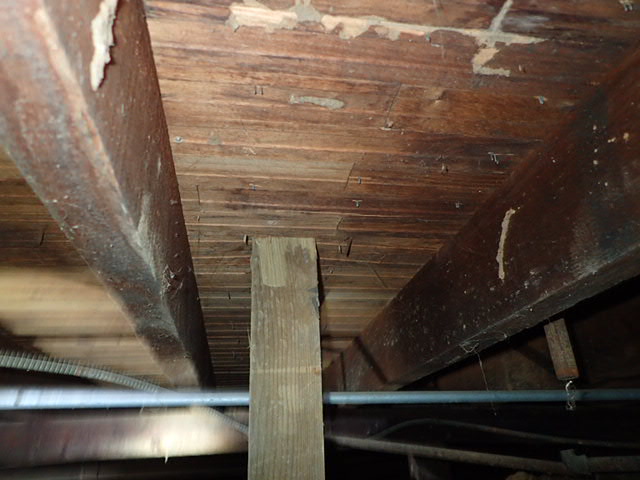
This is a non-professional support installed. This was most likely installed to minimize the flexing of wood floors that is common in a raised foundation. This is creating another problem though. This post is pushing up on the hardwood flooring and not supporting floor joists that would support the entire area. This will crown the floor and cause more trouble.
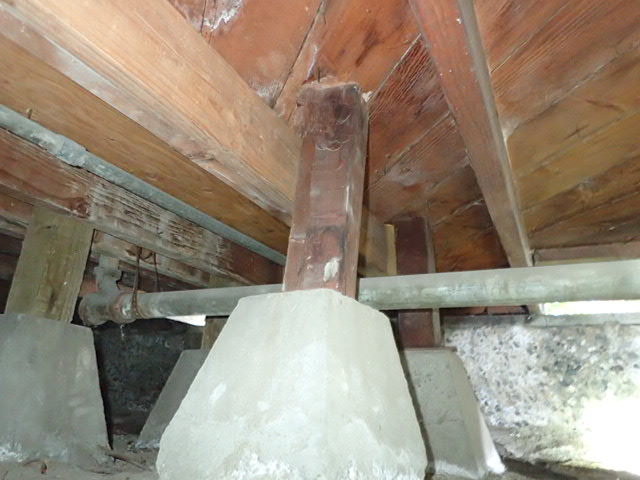
This shows another incorrect support pushing up on the subfloor instead of supporting a floor joist.

Another post not centered or secured to provide proper support for the beam. It is difficult for Ol' Lady Smith to check the work she paid for and this is one reason why a review before you give them the last check is wise.

This support is in the wrong position and not under the spliced beam.

Another beam not supported. We could simply say the guys could not measure correctly and missed.

This actually shows the sagging of a beam that needs another support. Notice the bailing wire did not keep the beam from sagging.

It is always wise to replace a missing support post to prevent the floors from sagging.

This shows a cantilevered beam that could use an additional support at the end to help minimize flexing or movement in the flooring.
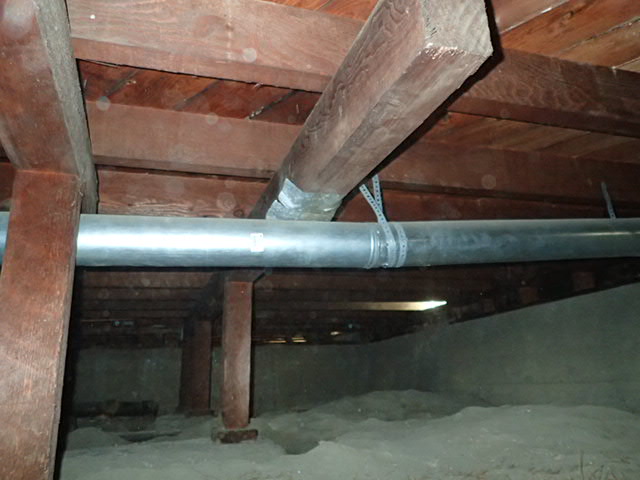
This shows another example of a cantilevered beam that simply cannot prevent the interior floor from sagging and flexing.

Supports that are not secured need to be corrected for safety reasons. Notice the minimal overlap and this would not be considered a proper installation.
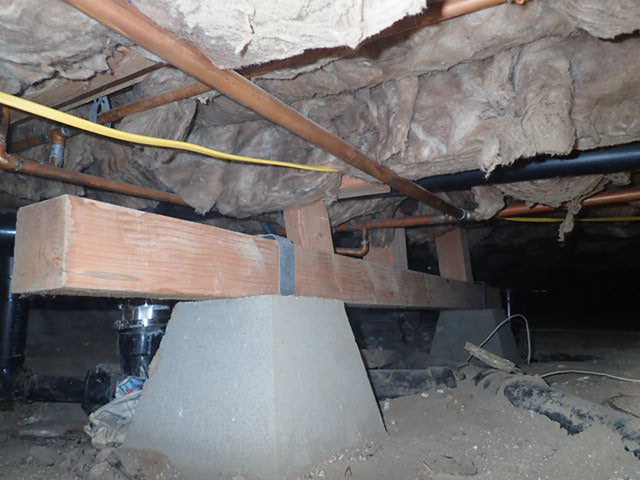
At first look when you see newer supports, you know someone has been working. Good. You just hope it is done well. These were never secured with fasteners/nails.

These new posts and beams were never secured and that probably means the workers did not do the job they were paid to do.

This shows a remodel with new supports but no fasteners on the metal framing straps.
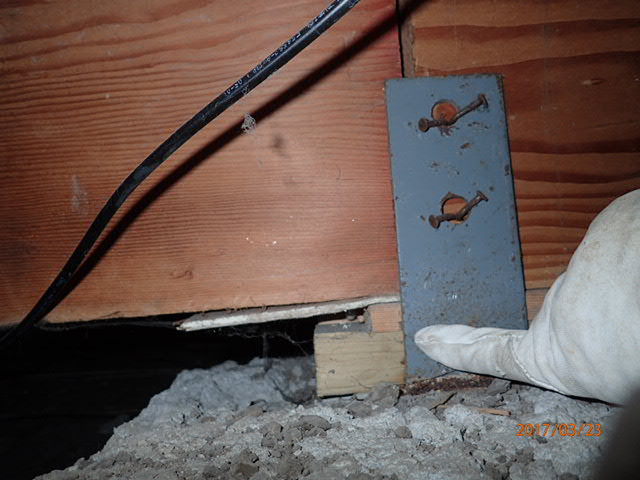
As a rule, we could safely say this is wrong. A heavy steel saddle is secured with large bolts not a silly little nail. This is the wrong saddle to secure two beams together as it only has one set of bolt holes. And the left beam is not even secured. = WRONG!
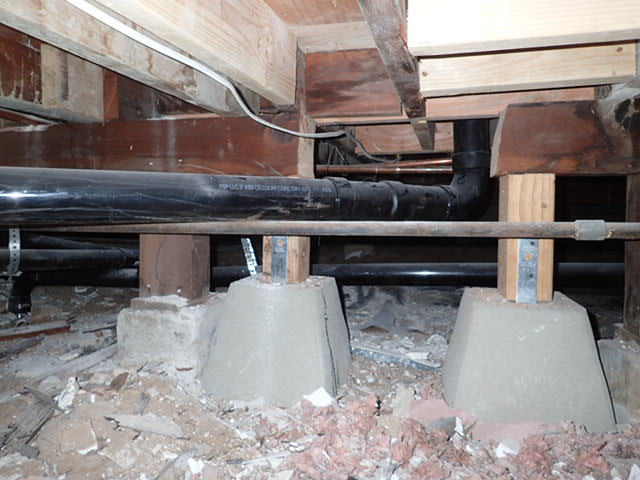
This shows where remodeling and plumbing cut a beam but they installed supports to prevent any floor from sagging unlike some of the preceding pictures.

This is a scary attempt at fixing things and has several things wrong. The horizontal beam that is cantilevered has no support under the end. The mold is readily visible. The leaning post that is not secured just adds to the excitement.

Nonprofessional supports should always be replaced. It is not possible to nail or secure fasteners to a loose brick.
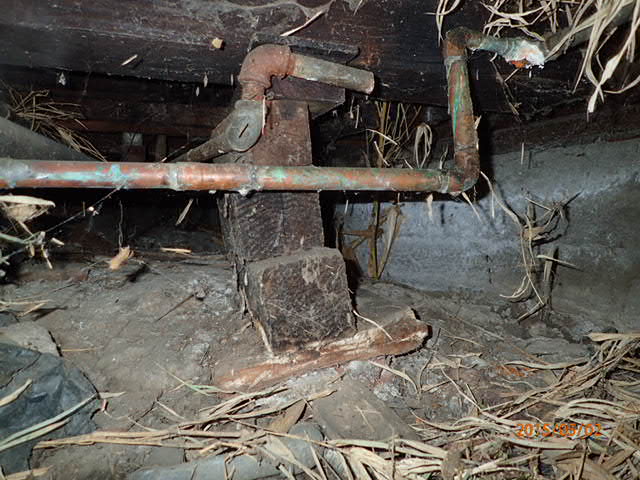
This shows another non-professional attempt to add a support that has shifted in the loose soil.

CMU’s (Concrete Masonry Units) can be used for foundations but not installed in this horizontal position. In addition, it is not possible to nail the wood block to this to be secured.
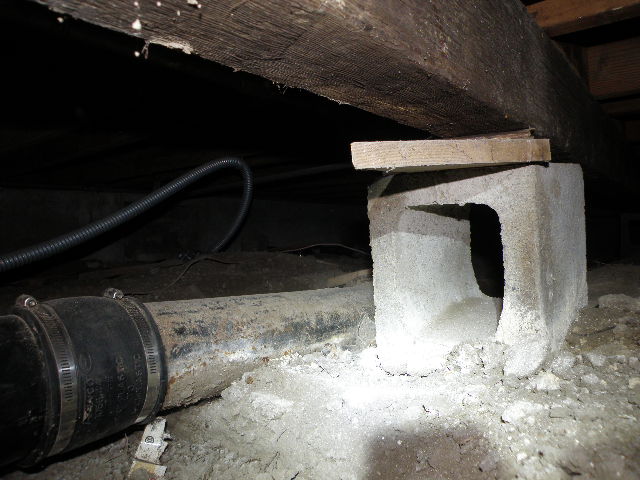
Concrete blocks do not have the structural integrity for supports when installed sideways and not filled with concrete.

This shows another CMU that is more of a hazard than a support. This is not the intended use and you cannot nail to concrete blocks.
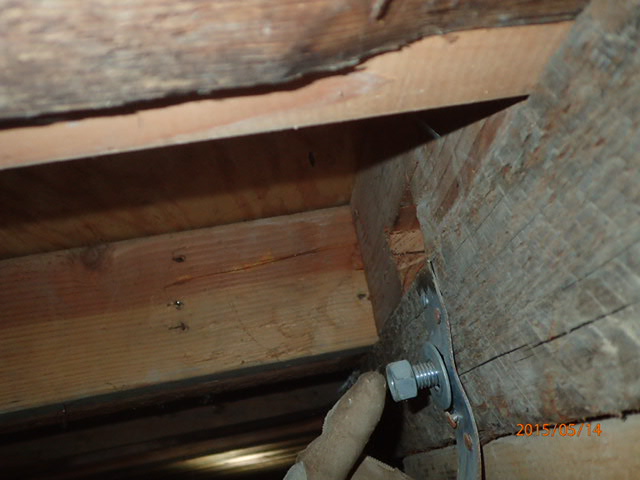
If someone is installing seismic bolts, they should all be properly secured.
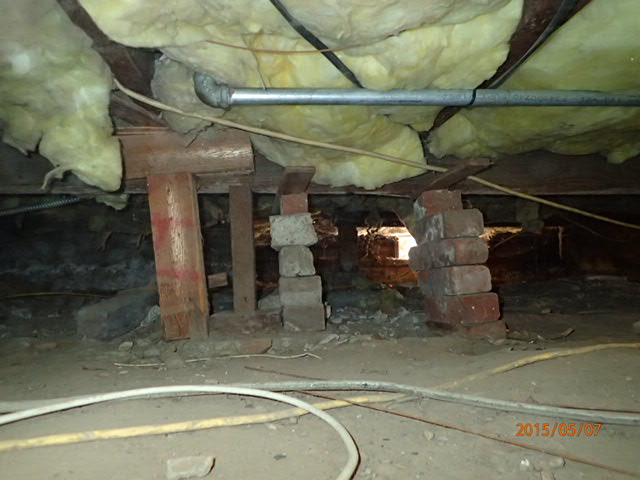
If this is what you see when you enter a crawlspace, call a professional. This will need time and money to replace the non-professional supports. If the seller of the home plans to use Uncle Wilbur to fix things like he has for years, politely decline the offer and get someone else to do the work.

This attempt is not providing the proper structural support but is more like a seesaw or Teeter totter.

Steel jackstands were never designed to be permanent supports under a permanent structure.
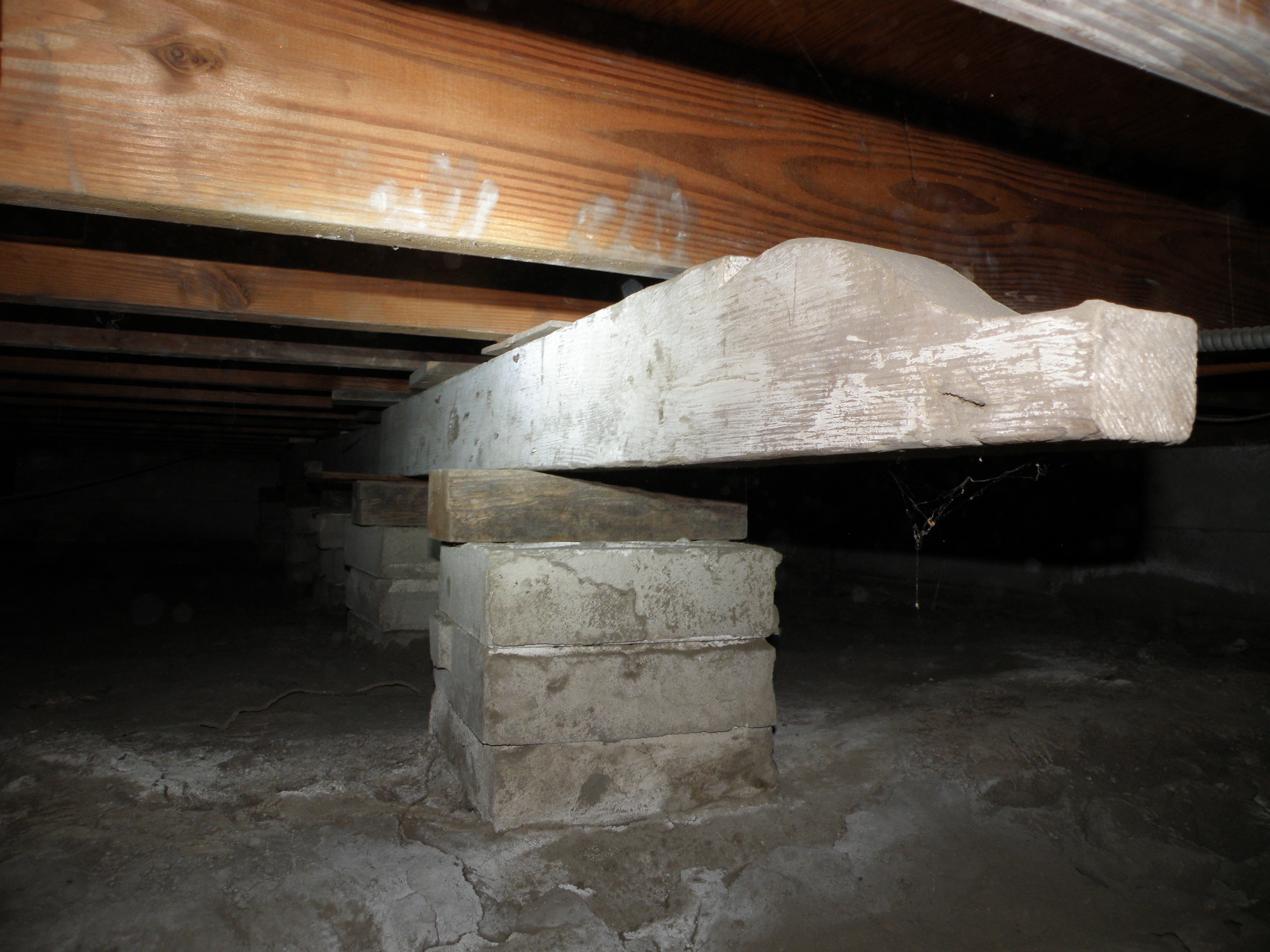
Too many houses have non-professional supports installed in the crawlspace. Without framing straps or permanent footings, this could easily shift and move.
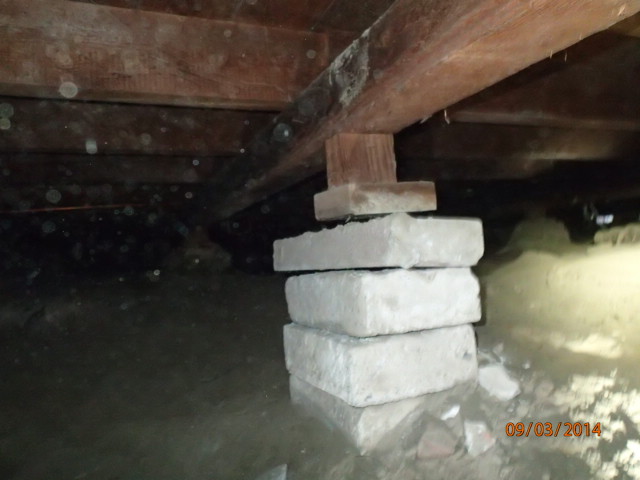
Without compacting soil or properly embedding a concrete base, supports will settle and shift.
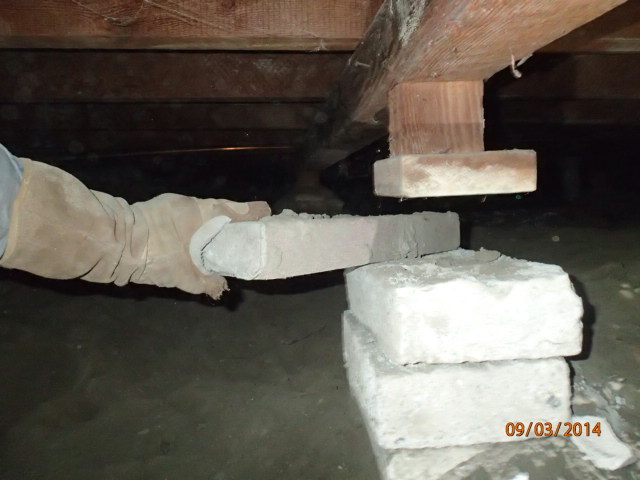
This shows the inspector able to remove a scrap piece of concrete that was designed to support the flooring.

Even with an extremely strong steel I-beam support system, water can cause damage. The steel was encased in concrete on top of the pier. There was excessive moisture causing the steel to corrode and spall, popping the concrete apart. This is no longer secured but only resting on top.

This is called splashing water outside the tub curtain for A Long Time! and rotted wood. Would you believe the bathroom floor was sagging next to the tub?
